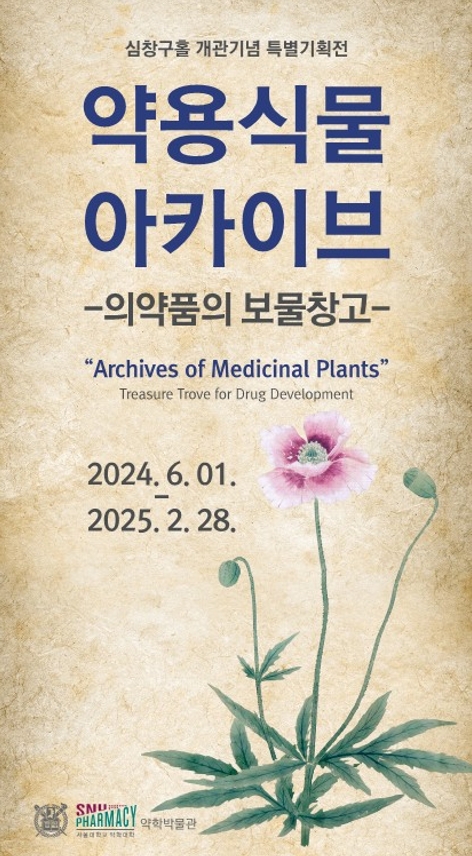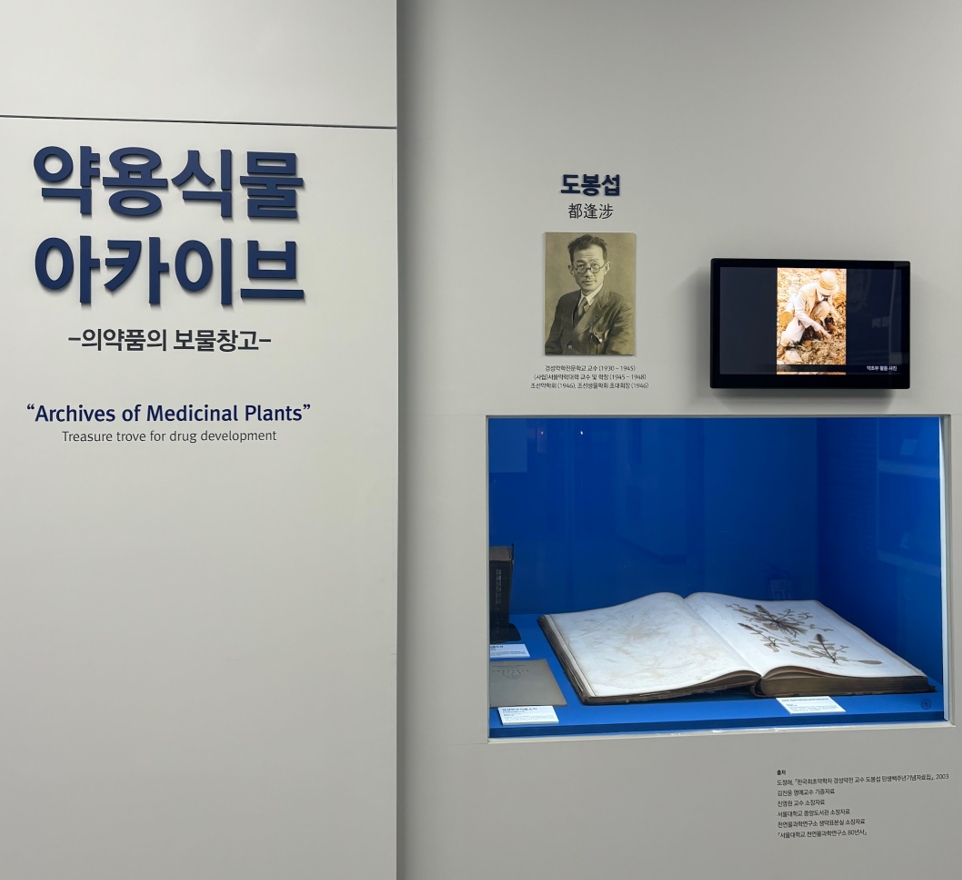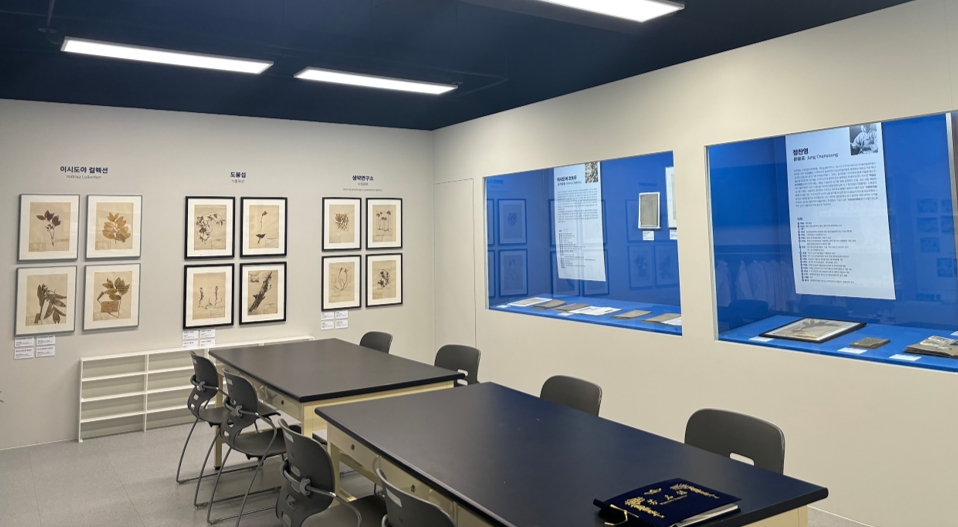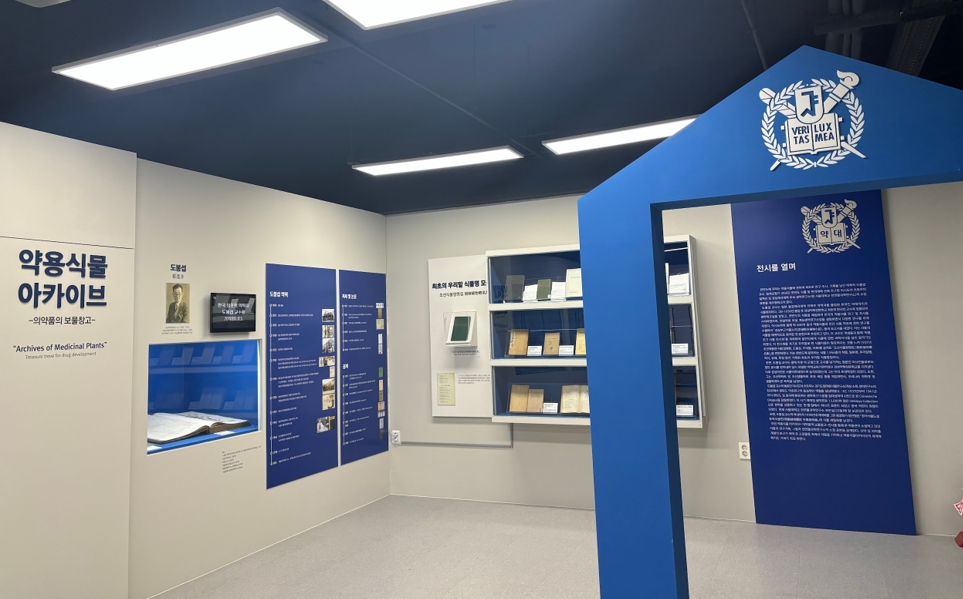In celebration of the opening of the Shim Chang-Koo Hall at the Pharmacy History Museum of SNU, the College of Pharmacy hosted a special exhibition titled Archives of Medicinal Plants - Treasure Trove for Drug Development. The exhibition started last June and has carried over until this February. Situated across the Gasan Museum of Pharmacy History in Building 21, the Shim Chang-Koo Hall was created to host exhibitions and educational experiences. Its establishment was funded through a donation from Professor Emeritus Shim Chang-Koo.

Poster for the Exhibition Archives of Medicinal Plants
- Treasure Trove for Drug Development
The exhibition primarily focused on Professor Do Bong-seob’s life and research. Professor Do was the first Korean professor at Kyungsung Pharmaceutical Junior College, the predecessor of SNU College of Pharmacy. He also left the first research records regarding medicinal plants growing in the Korean Peninsula. Professor Do went on to become the first chairman of what is now the Korean Association of Biological Sciences and the Pharmaceutical Society of Korea, leaving a great mark on Korea’s pharmaceutical and biological fields.

An Introduction to Professor Do
One of the significant works on display was the first collection of plant names to be recorded in Korean. The Joseon Singmul Hyangmyeongjip(Catalogue of Joseon Plant Names) details the scientific name, Korean name, Japanese name, etymology, and characteristics of 1,944 different plants. The exhibition also included several works donated by Professor Do. His donation of Der Naturselbstdruck(Nature's Self-Printing), which is a 19th century production of 500 nature prints by the Austrian Empire, was also on display—there were only 5 copies ever created.
The exhibition also curated a section dedicated to Jung Chanyoung, wife of Professor Do and artist who specialized in traditional color painting. Jung became the first featured female artist at the Joseon Art Exhibition, later going on to receive the Changdeokgung Award, the highest prize of the exhibition, for her work A Girl. Her works are included in the book New Flora of Korea, which is an important resource in contemporary Korean botany research.
In the exhibition, on display was the Hanguksan Yudok Sikmul(Korean Poisonous Plants), a collection of plant illustrations painted by Jung in order to assist her husband’s research into medicinal plants. She drew the plants that Professor Do collected, showing off her signature fine brushwork and vivid colors. Jung’s detailed and accurate portrayal of these plants are an important resource in plant taxonomy to this day.

Sections on Jung Chanyoung and Ishidoya Tsutomu’s works
Finally, the exhibition included a section on Ishidoya Tsutomu, a research colleague of Professor Do. Following his 30 years of settling in Joseon, Ishidoya focused on research of flora existing in the Korean Peninsula. Collaborating with Professor Do, the two published Florula Seoulensis(The Flora of Seoul), which categorized over 800 species of plants into 116 groups and included an explanation of how the plants were sorted. This resource is widely regarded as the first text to systematically organize Seoul’s flora, and can be seen on display at the exhibition.
Also on display were individual works of Ishidoya, such as his compilation of 515 herbal medicines across the Korean Peninsula and China, titled Chinesische Drogen(Chinese drugs). A copy of part of the Ishidoya Collection, a collection of 15,000 herbal medicine specimens produced at the time, was also on display. This compilation is a significant academic and historical resource, acting as the standard manual of Korea, Chinese, and Japanese herbal medicine.

An Introduction to the Exhibition and Professor Do
The museum hopes that this special exhibition will be an opportunity to remember Professor Do Bong-seob, Jung Chanyoung, and Ishidoya Tsutomu through artifacts that have helped in the development of pharmacy.
Written by Eusun Lee, SNU English Editor, sunnylee006@snu.ac.kr

